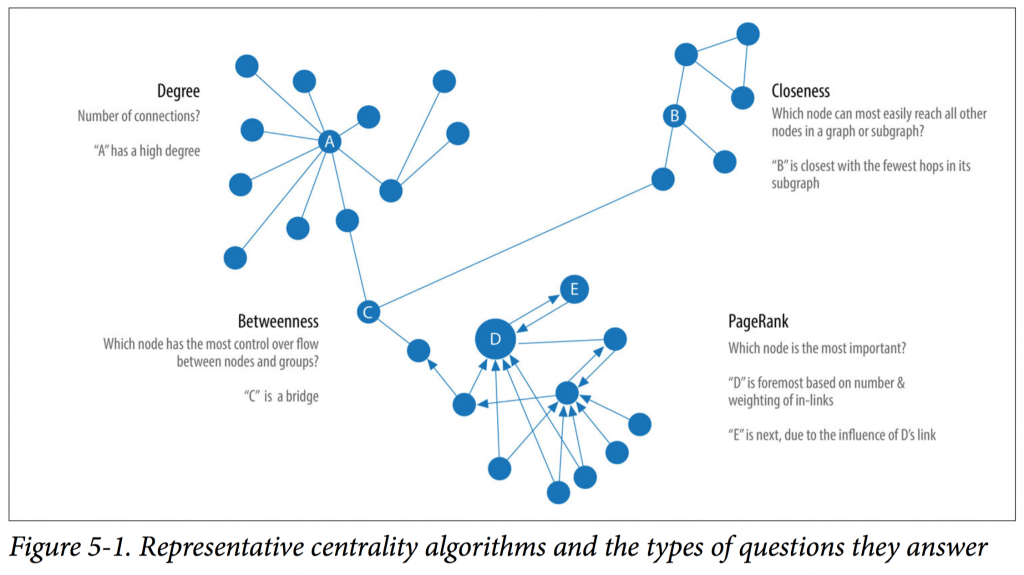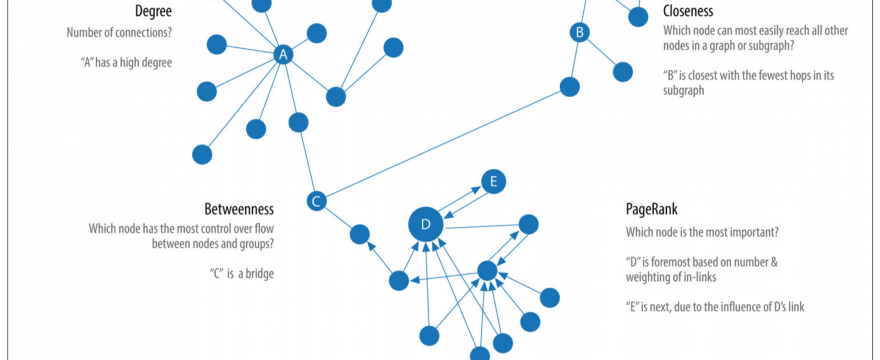I’ve been spending a lot of time thinking/learning about small network phenomena. Questions like, what characteristics of relationships better predict where outsized returns on relationships will/should come from?
For example. The first few years Ann and I started Inbound Found, referrals (and resulting referrals of referrals) from four people accounted for 90% of the work we got: my brother Pat, Ann’s ma Beth, a friend from high school, Peter, and Steve, my broker from when I worked as a real estate agent summers in college at the Jersey Shore.
Personally, I wouldn’t say Ann and I have a high number of connections, but the ones we do have we’re close with. And of those connections, Pat, Beth, Peter, Steve themselves all have a high degree of first order relationships.
I’ve talked about centrality algorithms a bit before, but the below is a good summary, I’ll make it clickable:

I would describe Ann and I as having high closeness when characterizing relationships with others, and those four wonderful people mentioned above as having high degree of relationships with others.
Further, the nature of their referrals can tell us a lot about our beloved referrers.
We can look at the likelihood of us closing those referrees, the resulting strength of relationships with referred sources, how personally close or similar they are to referred sources, overall fit, dollar value, who they decided to refer and from which network. Peter from personal network, Pat and Beth from a mix of personal and professional, Steve from work relationships.
Relationships are so rich in value. And the above centrality algorithms can help us try to quantify the value of different characteristics based on our context in the network.
What about the betweenness algorithm, tho?
Another example.
A few years ago, a chance encounter with a neighbor (now good friend) at a block party resulted in our biggest web design engagement to date at the time, a 2m sqft mixed development project in the old Bell Labs building.
Working on that project with different stakeholders resulted in some (not great) footer copyright link leads from tenants and a (great) relationship with the client’s marketing agency, Ultraviolet. Hitting it off with them resulted in more work, including their own visual identity and site redesign. And another four or five meaningful engagements with their referred clients, including another site we just finished this past week.
All precipitated by chatting with a nice couple at a block party.
Our neighbor had massive control over whether or not we would be put in touch with Bell Works people (betweenness) and clearly influenced the decision to use us. At that point Ultraviolet had massive control over whether or not we would be connected with their clients.
Maybe this is all very obvious. But to me it’s new information.
And most (all?) of these relationships and relationships resulting from relationships have left a footprint online of all of this:
- I talked about it here and linked out to some of the sites
- We built sites for Bell Works, Ultraviolet, and inCourage, linked back in their footers in some cases
- Some marketing work and launches were shared about on different mediums
- Lots of social connections were made with people involved on all those different projects
- If we ever get to it, portfolio and case study items will further aid in clarifying the nature and strengths those relationships
In the future, I’d love to get to a point where I can better identify expertise neighborhoods and high betweenness types in client site’s networks and competing/similar sites’ networks.
As I’m learning about network science things, and how predictable outcomes of network characteristics are, it’s becoming clear to me that two of the most impactful things you can do are:
- reach out (up?) a level and connect with someone you have a high likelihood of affinity with that’s established in a new to you, semi-adjacent network. Jonathan Stark talks about this a lot. When he comes across other value pricing consultants, he immediately feels a kinship and reaches out.
- develop close ties with those nearby, people you might think of as competitors if you weren’t so deeply committed to just being of service to your audience, and recognize when and how and under what circumstances they would be likely to connect you.
